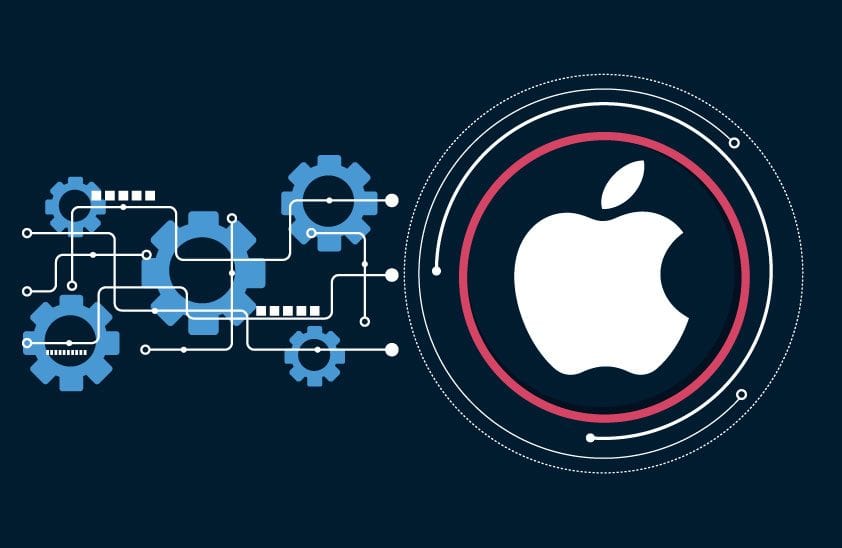Managing your business’s transition to Apple devices: lessons from an expert MSP

Steven Freidkin, CEO of Ntiva, an MSP providing IT services, cybersecurity services and IT consulting, believes that many businesses still hesitate to move toward MacOS devices given the lack of available support to maintain the systems or fix them something goes wrong. He advises on the best system for your company, addresses concerns regarding a transition, and shares his own insight on the move to an Apple-based IT system.
Chances are, many workers in America already use at least one Apple device to do at least part of their work. The iPhone has been the best-selling smartphone in the US almost since its launch in 2007. Meanwhile, the iPad is arguably the go-to tablet for the average consumer, and as such, it took the leading role in many corporate use cases.
Yet, many companies are not ready to make the best of them. Since the enterprise technology market still heavily skews towards Windows PC environments, most companies are too entangled in a Windows ecosystem. Also, the upfront costs for computing are lower for PCs than for Apple devices, and the transition towards supporting a hybrid Apple-PC environment has costs and challenges that IT managers need to consider.
However, in practice, most businesses are already immersed in a mixed world. For example, the bring your own device (BYOD) trend meant that enterprise technology managers had to provide support for Macs and iPads owned by users in a concise time. And the shift to work-from-home brought about by the pandemic means that corporate users will resort to the device they prefer to use to do their work — and it is predictable that many of them will opt for Macs.
For enterprise technology managers, this reality brings challenges and concerns of its own. Coming from a PC-standard legacy, many enterprises are not really prepared to manage Macs, and they end up shoehorning Windows-based standards and practices.
Businesses that do not proactively manage Apple devices are not taking advantage of the integration possibilities between Mac OS and iOS. As a result, they are missing out on smoother workflows between mobile devices and computers and faster and simpler development and deployment efforts since Apple-Silicon-based Macs are now capable of running iOS apps.
Common Challenges When Transitioning to Apple Devices
Transitioning to manage Macs, iPhones and iPads poses plenty of challenges for IT operations. First, Apple tends to have tighter control of its certified service providers than the PC world, where the hardware and software vendors are different. Therefore, procuring and servicing Apple devices introduces a learning curve for IT departments that should be considered.
Second, the costs of adapting legacy services and infrastructure to an Apple-based environment should be a part of the calculation. As the transition from Intel-based to Apple-Silicon-based devices makes it likely that compatibility issues with PC-based software will increase —a factor the decision to move into supporting Macs should weigh.
Third, the cybersecurity challenges in the Apple world are a growing issue. Long gone are the days when Macs were considered more secure than Windows PCs. As they became popular, the incentive for cybercriminals multiplied to find and exploit security weaknesses on them. Most risk factors for hacks and other security breaches are still device-agnostic — in other words, the user remains the leading risk factor.
Fourth, some companies might have a more difficult transition than others, mainly if they rely on mission-critical Windows-only software. Also, in industries and environments where BYOD is not viable, the pressure for supporting Apple devices might not be as high.
Overcoming The Challenges
So how do you solve these concerns and make the most of Apple devices in the enterprise? First, companies should know they will be better served with an Apple-certified service provider that helps them procure and administer their devices and apps; and that they will need to use Apple-owned business account managers and device managers.
Also, companies should consider recruiting an Apple-certified MSP while transitioning, as it can ease the process and minimize the risk of potential compatibility and security issues. In addition, an MSP can help train existing IT teams to understand and better manage the Apple ecosystem, and in some cases, take charge of the entire IT support operation.
Cybersecurity is another factor that must not be overlooked. When organizations apply security solutions that have been designed for Windows ecosystems to Apple operating systems, they will often fall short. To overcome this, businesses need to invest in Apple Mobile Device Management (MDM) tools with out-of-the-box connectivity with Apple Business Manager.
When making the switch to Apple, the payoff can be significant. Research shows that allowing enterprise users to use Apple devices for work improves productivity, performance, and employee loyalty, particularly among millennials who value choice with the hardware they use for work. A study by PwC says that 59% consider access to state-of-the-art technology as a factor for deciding on taking a job, while 78% say the choice of using the technology they like, instead of the one that is IT-mandated, makes them more effective at work.
On the IT support side, betting on an Apple environment can also pay off. Research from IBM says Apple devices reduce management costs: Mac users generate fewer tickets, and fewer engineers can manage more devices when compared with Windows computers.
In sum, Apple supporters claim implementing Macs and iOS devices in the enterprise generates an ROI that offsets the higher initial costs. And many enterprises are already making the switch. Apple says every Fortune 500 company uses its devices, and, by some estimations, 55% of businesses in the US now use or allow their employees to use Macs.
READ MORE:
- Biometric authentication: the good, the bad and the ugly
- You’ve had a breach – how do you successfully roll out an emergency patch?
- How to successfully reopen your office in a post-Covid-19 world
- Common migration pitfalls and how to avoid them
Should every company take the step? While every case is unique, it is safe to assume that many enterprises already have the challenge to support and secure Apple devices, whether they provide them to their employees or not. For IT managers, it is a matter of assimilating reality and taking advantage of the opportunity.
For more news from Top Business Tech, don’t forget to subscribe to our daily bulletin!
